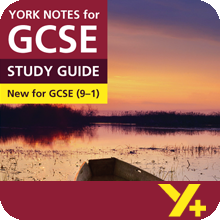Your Assessment
Read through the answer below and decide what grade to give it. Use the Hints & Tips to help you make your assessment.
Question: Explain how Dickens presents the relationship between Pip and Miss Havisham.
In your answer, you must consider:
- how the relationship is presented
- in what ways the relationship changes.
The relationship between Pip and Miss Havisham is an important part of the novel, and she takes on many roles, from supposed benefactor and teacher to tormenter and even mother figure. Miss Havisham’s relationship with Pip is a key element of Pip’s journey to adulthood.
Pip first meets Miss Havisham when he is a child who is too young to make a great deal of sense of the world around him, but even adults would find Miss Havisham hard to understand. He is invited to ‘play’, but even as this is announced to him by his sister Mrs Joe, she says he had better ‘play’, or ‘I’ll work him’. Pip only knows a frightening image of Miss Havisham as an ‘immensely rich and grim lady’ who keeps herself ‘barricaded’. In this aspect of Pip’s early relationship with Miss Havisham, Dickens draws on the fairy-tale tradition of the child being sent on an unknown journey or quest. This is further developed when Pip arrives at Satis House to find it ‘barred’ and the gate kept by the mysterious Estella, who explains the meaning of the Latin or Greek name ‘Satis’ – that the person who lived there would always have enough. Ironically, this house will go on to represent many things that Pip feels he lacks in himself.
At the first meeting with Miss Havisham, Dickens presents her as a terrifying Gothic character, comparing her to both a ‘waxwork’ at a fair and a ‘skeleton in the ashes of a rich dress’. Dickens indeed foreshadows Miss Havisham’s eventual death by burning. The difficult relationship between Miss Havisham, Estella and Pip begins in this scene when Miss Havisham says to Estella, ‘You can break his heart.’ Pip comments that he only thinks he heard Miss Havisham say this; he is puzzled because ‘it seemed so unlikely’. Dickens’s use of first-person narrator here allows the reader to experience the scene as Pip himself saw it as a child, which I think creates a sense of mystery and suspense
When Pip goes to visit Miss Havisham, Dickens presents him as being between two very different worlds – the world of being the blacksmith’s boy with his ‘coarse hands’ and his ‘common boots’ and the world of the upper class. This is the start of Pip’s ‘great expectation’ for himself that he is going to be made into a rich young man, and continues the theme of class and social status that Dickens explores in the novel. Pip is then devastated when Miss Havisham just pays for him to be trained as a blacksmith. Pip feels betrayed by this, which is why when Mr Jaggers tells him he is going to be given a fortune and sent to London, Pip understandably believes that Miss Havisham has changed her mind. Miss Havisham also lets him think that she has planned for him and Estella to one day be together, but Pip is gutted when he learns that Estella has married the violent Bentley Drummle.
All of this leads to the dramatic presentation of Pip’s final meeting with Miss Havisham in the chapter ‘Friendly Acts’. Dickens presents Miss Havisham admitting to Pip that she has caused great misery, but Pip reassures her that ‘I want forgiveness and direction far too much, to be bitter with you’. Their relationship has turned upside down and it is now Miss Havisham who looks to Pip for support and kindness. I think that this final scene between Pip and Miss Havisham, alongside the final scene between Pip and Magwitch, are scenes that show Pip’s painful journey into adulthood, where he learns that love and compassion are more important than money or being a ‘gentleman’.
